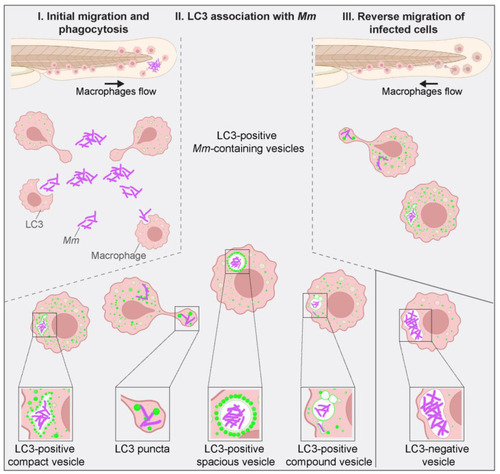Figure 6
- ID
- ZDB-FIG-230630-110
- Publication
- Muñoz-Sánchez et al., 2023 - Using Zebrafish to Dissect the Interaction of Mycobacteria with the Autophagic Machinery in Macrophages
- Other Figures
- All Figure Page
- Back to All Figure Page
|
Schematic overview of LC3-associations with |

